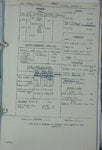...while retaining the basic fuselage (with bomb bay, multiple crew emplacement etc.). Installing the Twin Wasp engine is a good start (like it was historically), but probably not the end. Hopefully, the modified bomber will will offer more than a 2-engined Battle or the historical Beaufort 
('make more Beufighters' answer does not apply here)
('make more Beufighters' answer does not apply here)



